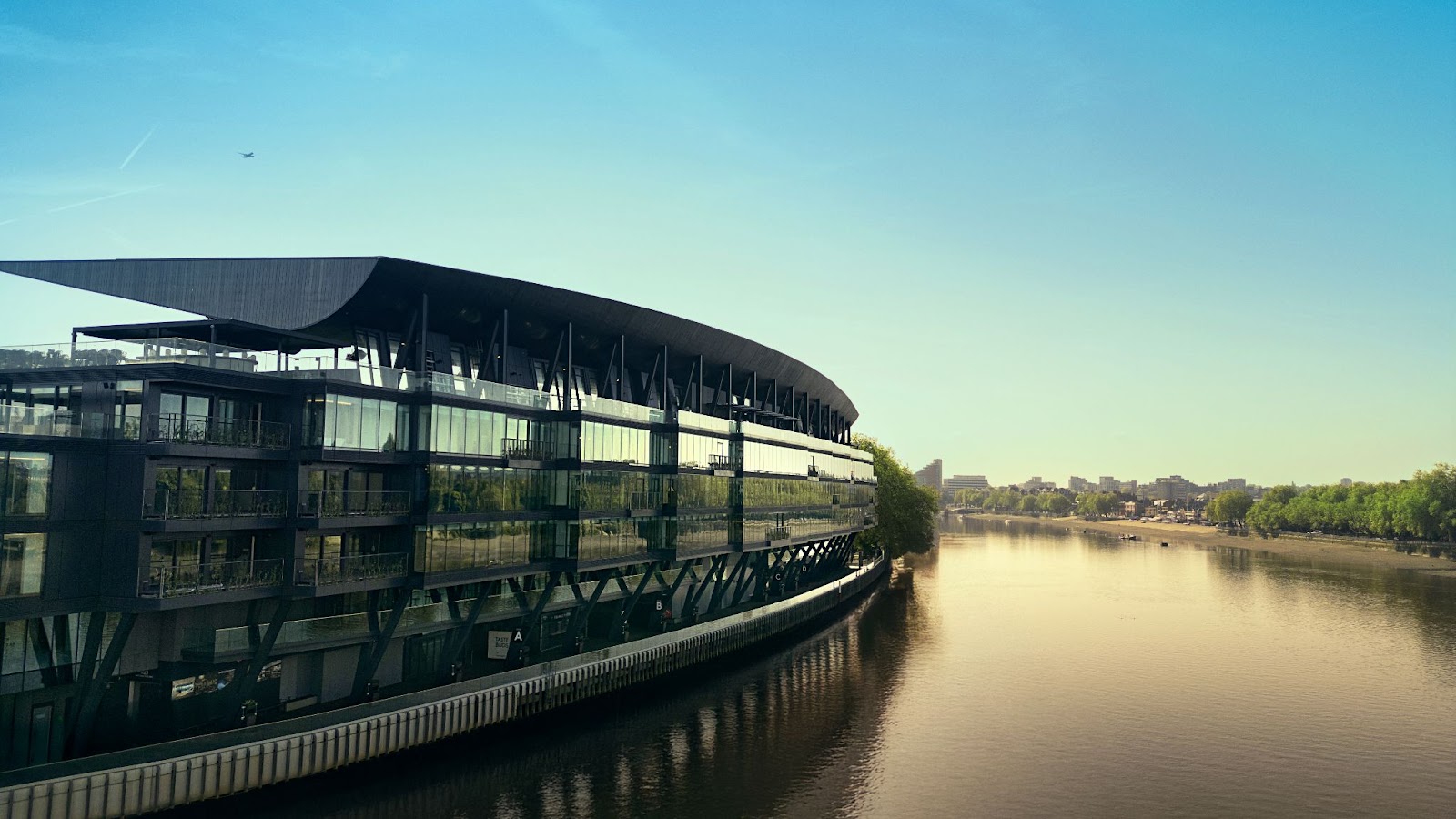
All photos: Iwan Baan
A new synagogue by Manuel Herz seeks to engage with the city and its Jewish history.
Mainz became an important centre of Jewish teaching during the Middle Ages when its influential rabbis included Gershom ben Judah. His wisdom was such that he was given the name Light of Diaspora, and the new Jewish Community Centre of Mainz, designed by Manuel Herz, draws on this tradition.
The Jewish community re-established itself in Mainz after the Holocaust, and by the 1980s there were 75 families living in the city. Since then immigration from the former Soviet republics increased the population six-fold, and demand for a new synagogue and associated community facilities grew accordingly.
The new complex is located in Mainzer Neustadt, a residential district of late-nineteenth century perimeter blocks. The building footprint is set parallel to the streets and its facades align with neighbouring buildings. This conformity, unusual for religious buildings, is intended to question the nature of religion within the urban context. By orienting the part of the building containing the synagogue towards the east, two open spaces are formed: a community garden for recreation and celebration and a public square in front of the entrance facing towards the city centre. The absence of barriers allows the square to be used for everyday public activities, which is almost unprecedented for a synagogue in Germany.

Cranked section
The synagogue and community centre are located on the ground floor while the building volume alternates between high and low points in response to both the brief and the context. According to Herz, the precise articulation of the profile is informed by the theme of writing and its relationship to space. ‘Judaism hasn’t developed a strong tradition of building or architectural style that conveys its values and credos into built space’, he says. Instead, writing can be seen as a replacement for spatial production, specifically the Talmud, which was written after the destruction of the second temple at the beginning of the diaspora. Architectural dimensions permeate the Talmud, from its content and structure to the debates between rabbis in its pages. This ‘object’ quality of writing, as well as the concept of the Talmud as a notion of space, inform the design. In particular Qadushah, Hebrew for raising or blessing, comprises five characters that are abstracted to articulate the building profile. The rippled facades of glazed ceramic tiles, suggestive of a different layer of writing, is arranged around the windows to create a perspectival effect, and this spatial quality is enhanced by the changing light.

The functional arrangement of synagogues is characterised by an inherent contradiction: they are usually oriented to the east or to Jerusalem, but the Torah is traditionally read from a central position. Herz resolves this architecturally with a horn-like roof that orientates the space to the east but brings light into the centre, falling on the location where the scriptures are read. The horn refers to a ‘shofar’ (ram’s horn) – Abraham sacrificed a ram in place of his son Isaac – symbolising the connection between mankind and the divine.

The interior surfaces are decorated with random densely-packed Hebrew letters forming a mosaic-like relief. In some areas the density of letters is reduced, the letters rearranged so a text becomes legible. ‘Piyutim’, religious poetry written by the rabbis of Mainz in the tenth and eleventh centuries, are inscribed on the surfaces.
Because most Jewish commun-ities in Germany have been discrete about their activities, they tend to play only minor roles in the social and cultural lives of cities. The Mainz synagogue represents an attempt to develop a new consciousness. It seeks to attract all of the city’s inhabitants, Jews and non-Jews, to participate in its religious, social and cultural activities. The design will inevitably attract attention, and Herz hopes it will arouse ‘questions, doubts, maybe anger, and maybe hope’. It may also help establish the Jewish community of as a visible and active part of Mainz society while reconnecting with its rich history.
Project team
Architect: Manuel Herz Architects; design team: Manuel Herz, Cornelia Redeker, Sven Röttger, Sonja Starke, Elitsa Lacaze; Hania Michalska, Michael Scheuvens, Peter Sandmann; project manager: Mainzer Aufbaugesellschaft; site supervisor: Klaus Dittmar Architekt; landscape: Harald Heims; structural engineer: Arup; facade planning: Niels Dietrich Keramikwerkstatt; electrics: K Dörflinger; services: House of Engineers; building physics: IBC Ingenieurbau Consult; fire: Ingenieurbüro Ingo Petry; acoustics: Ingenieurgesellschaft für Technische Akustik; glazed tiles: NBK Keramik.
AT214, January 11, p.18.














